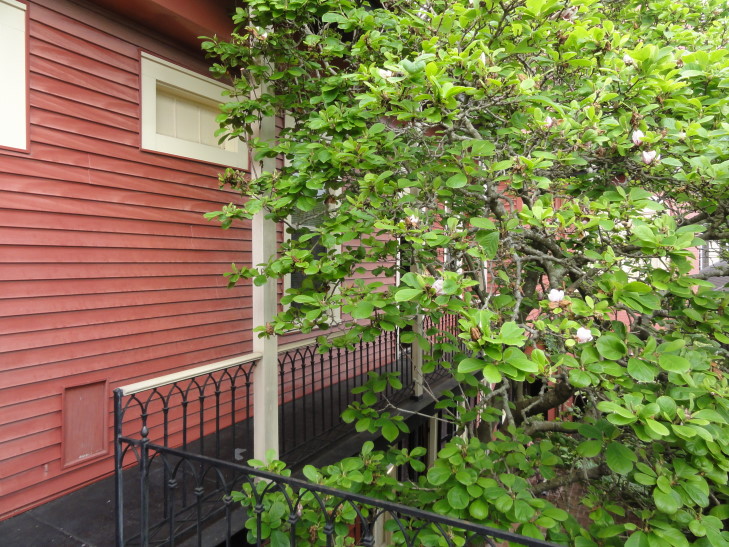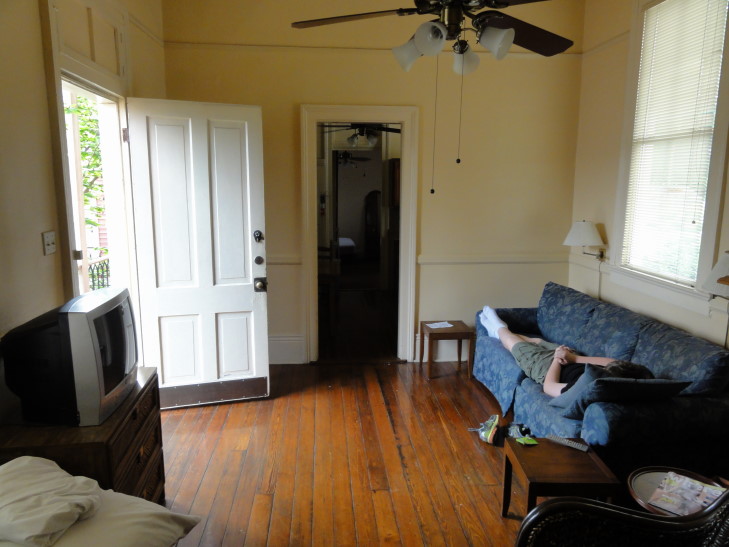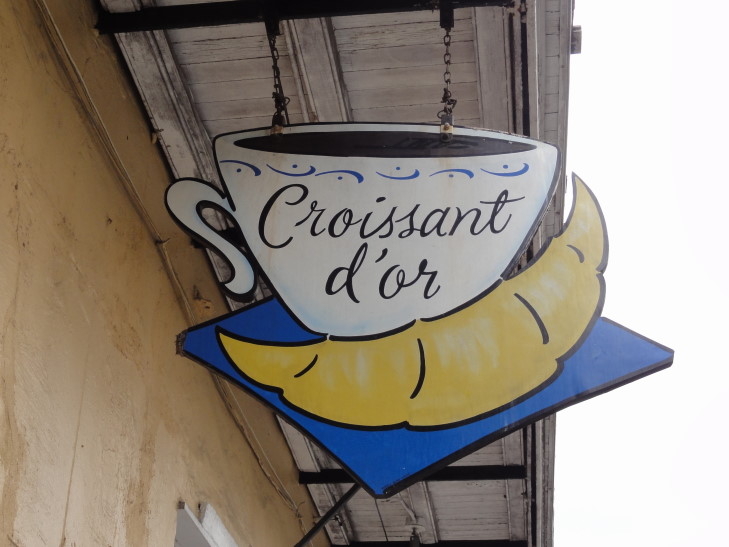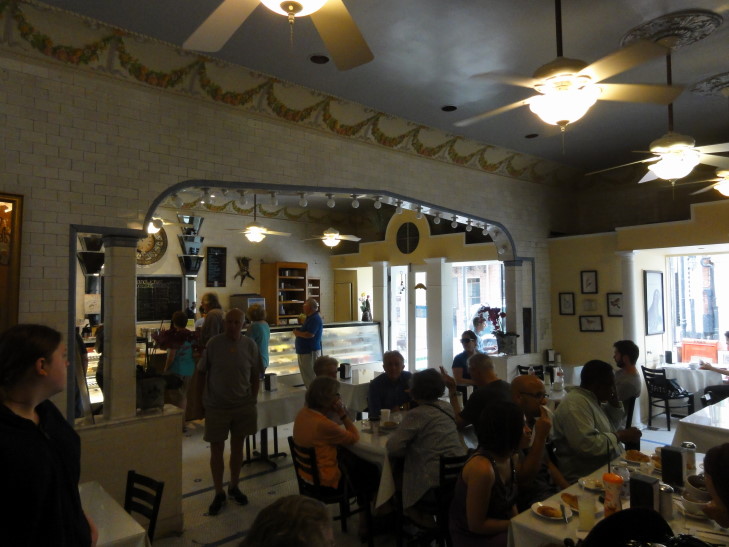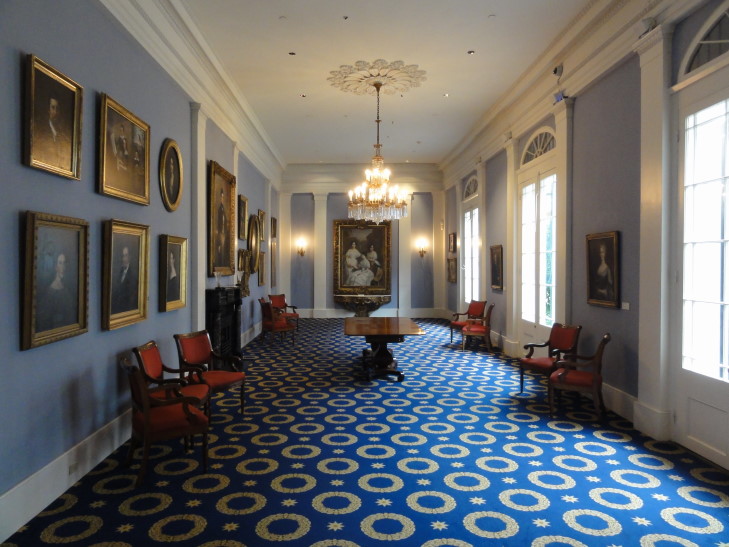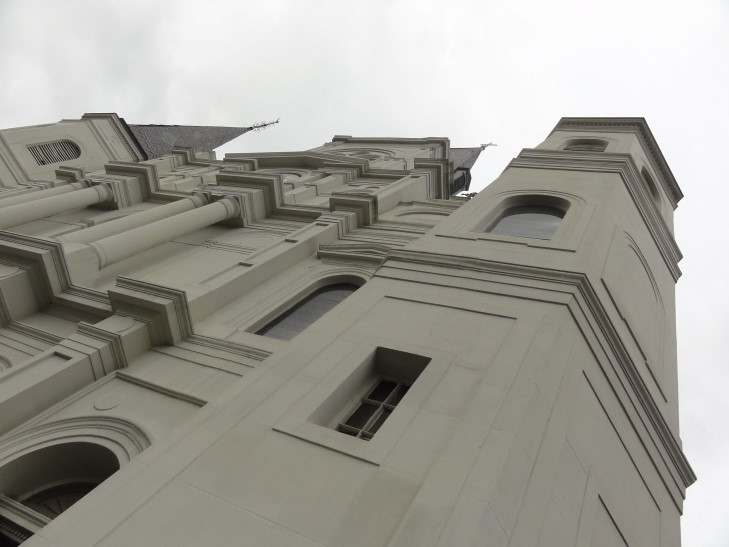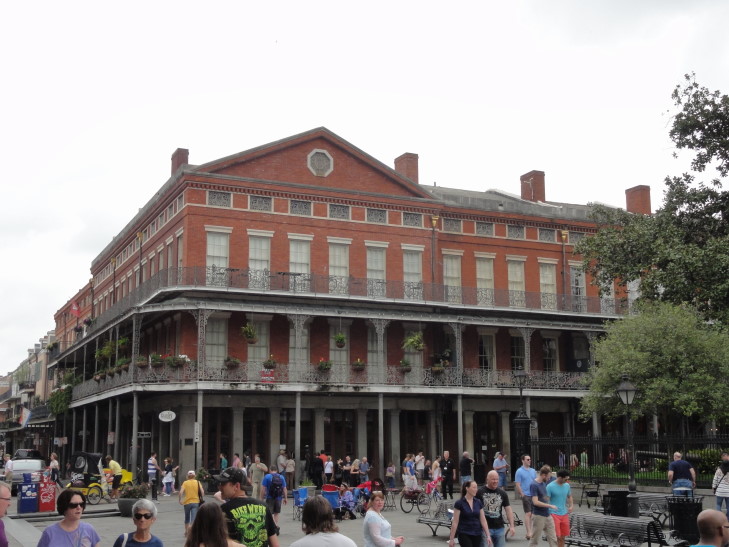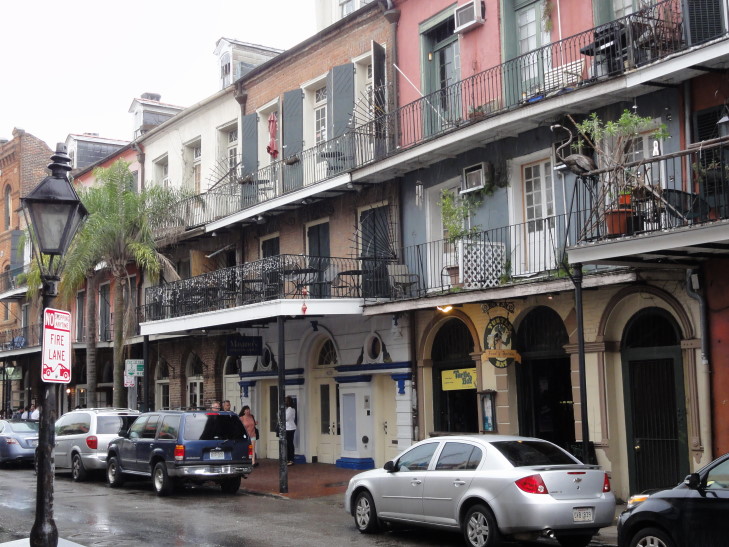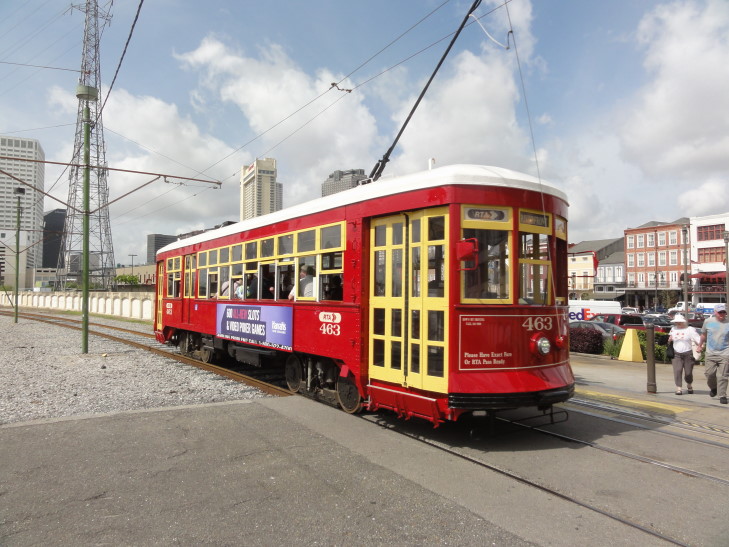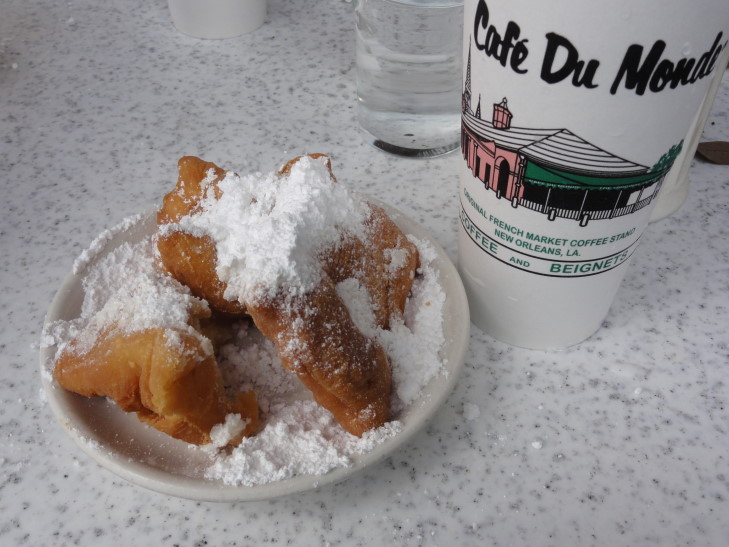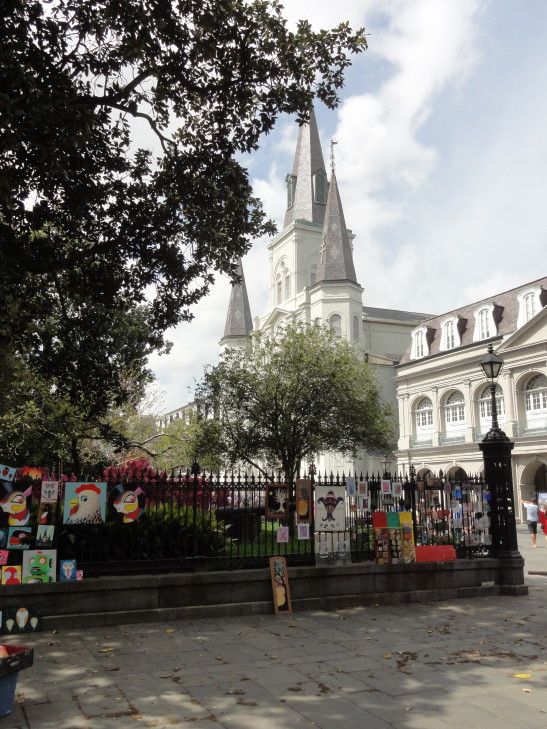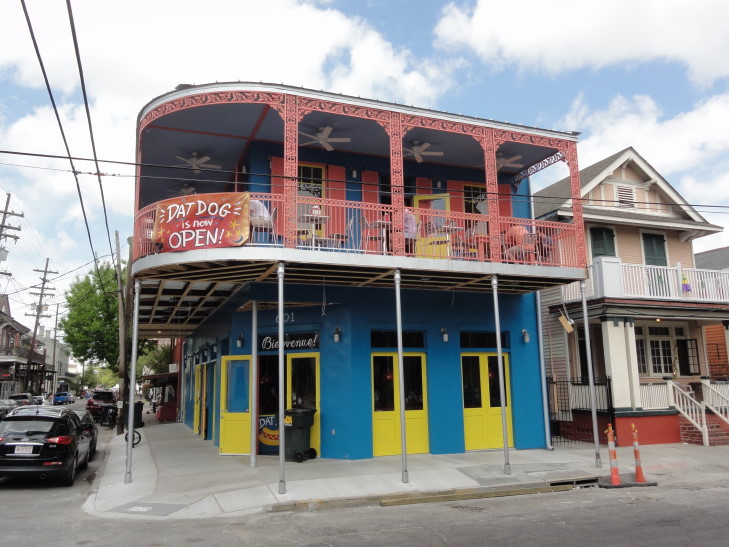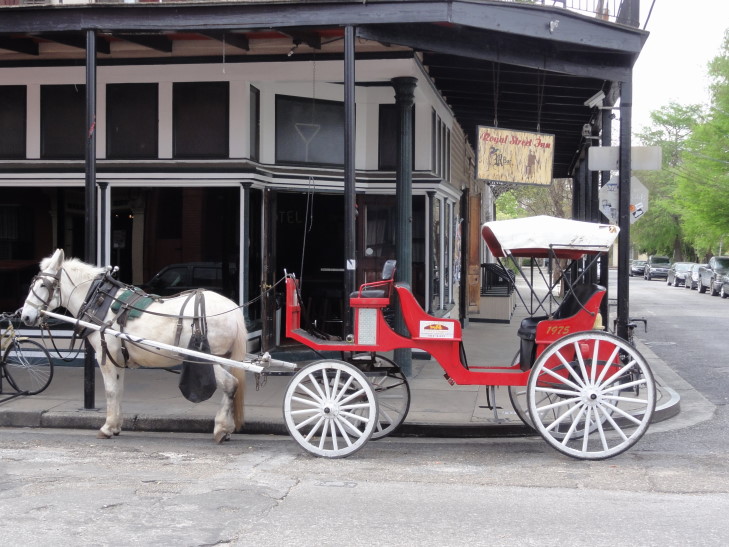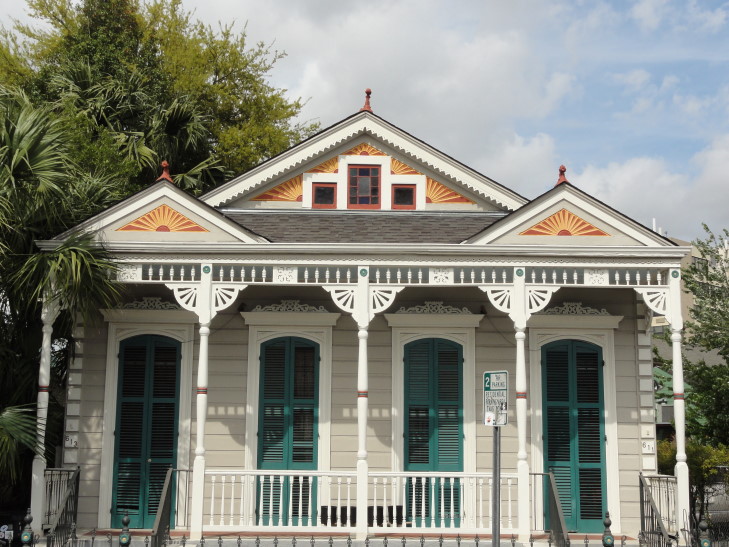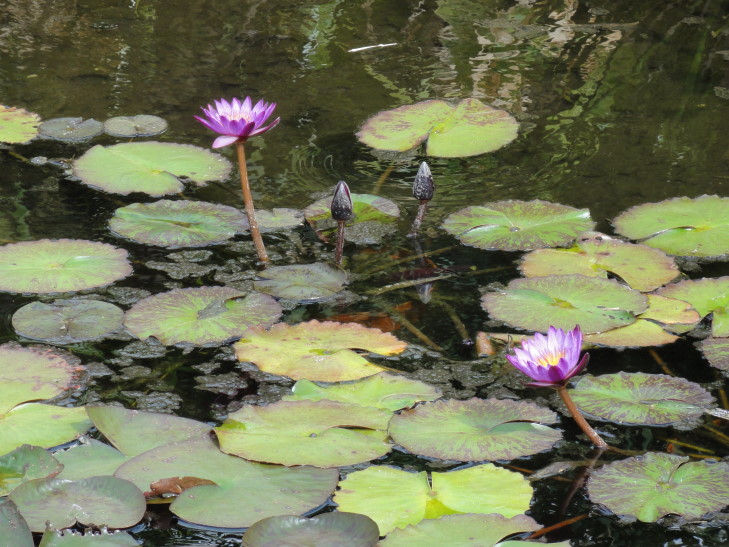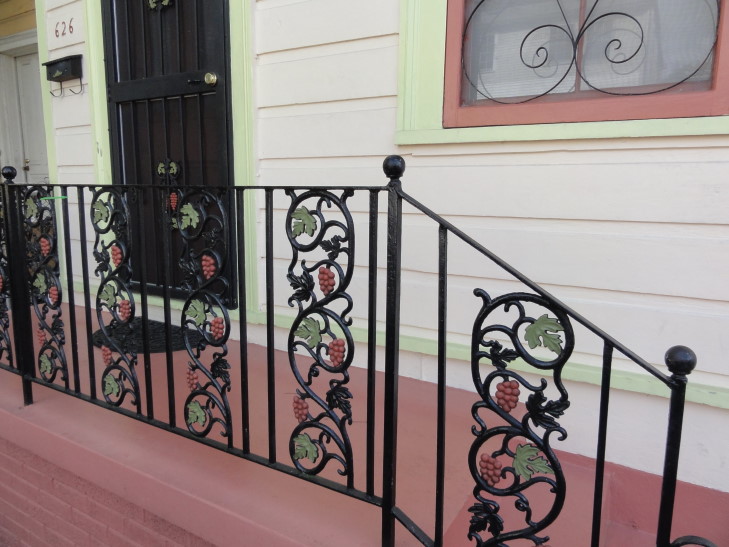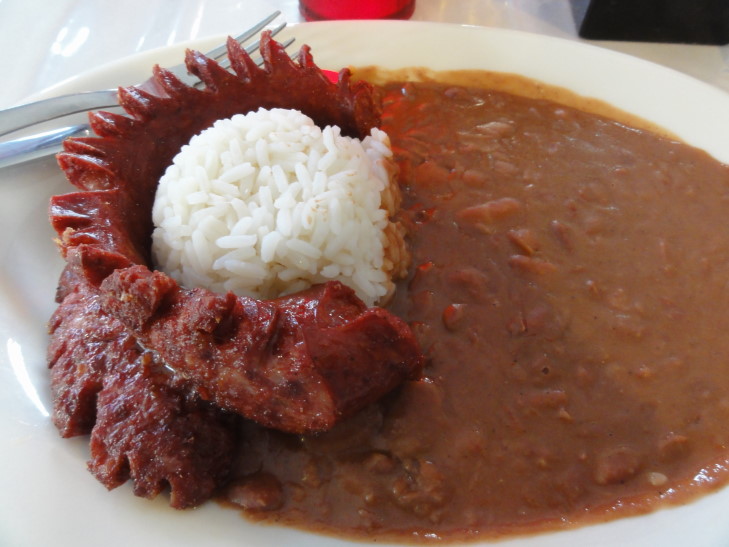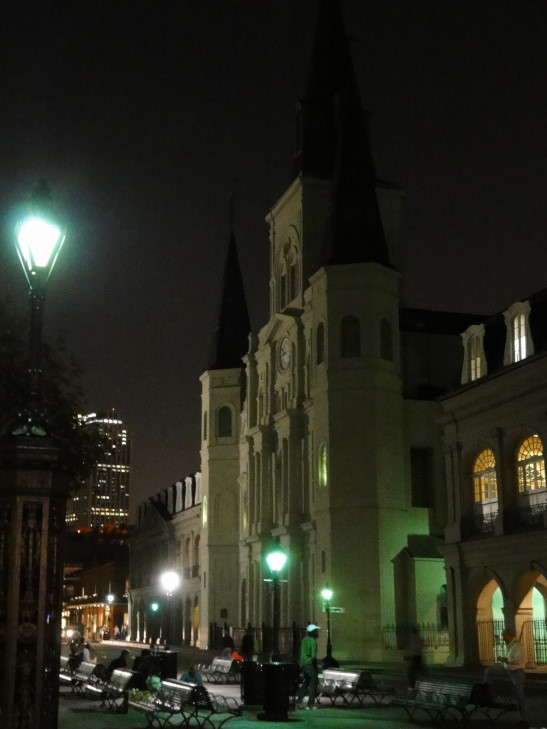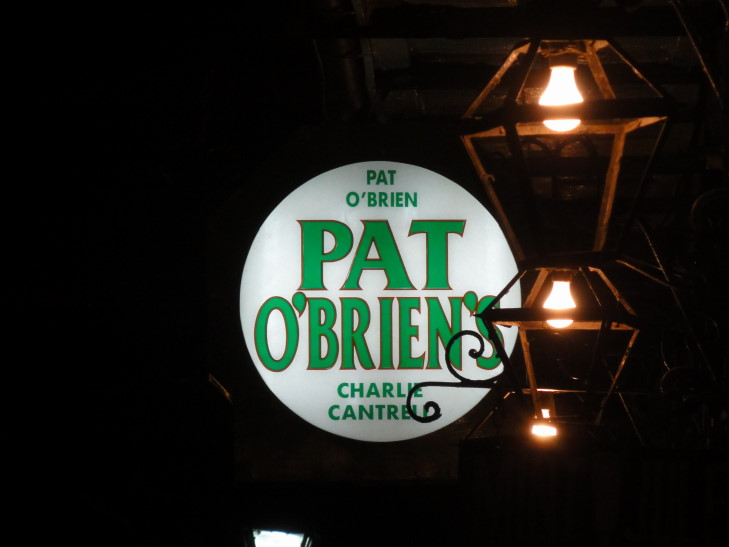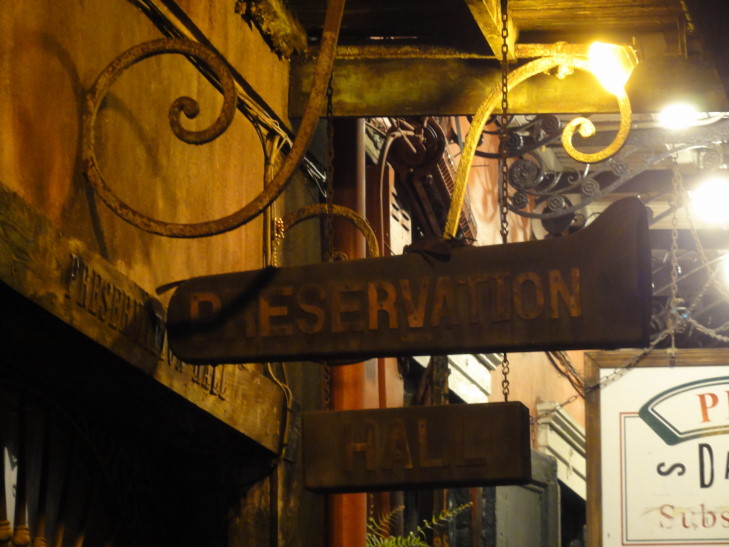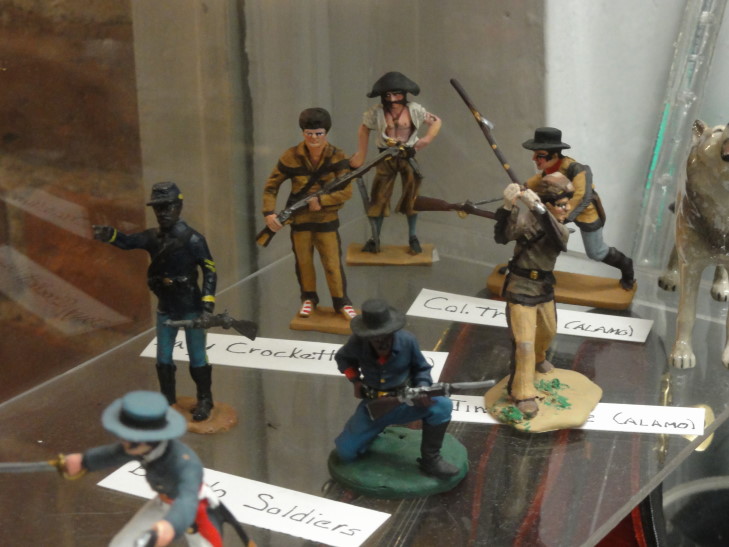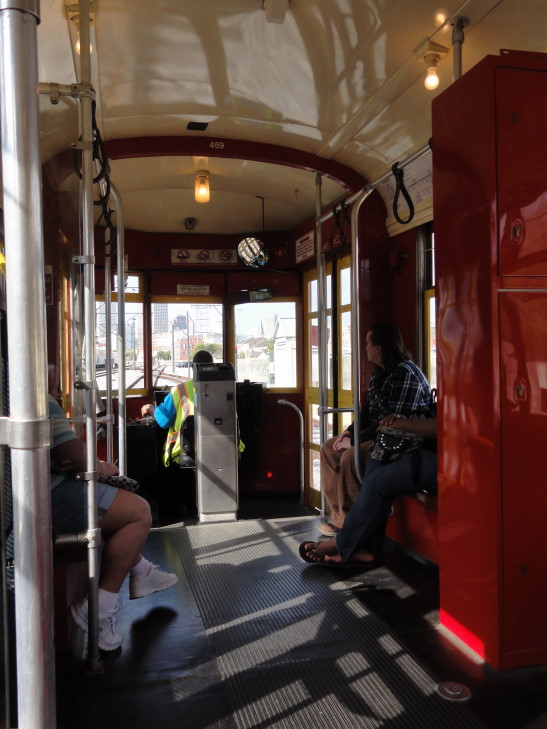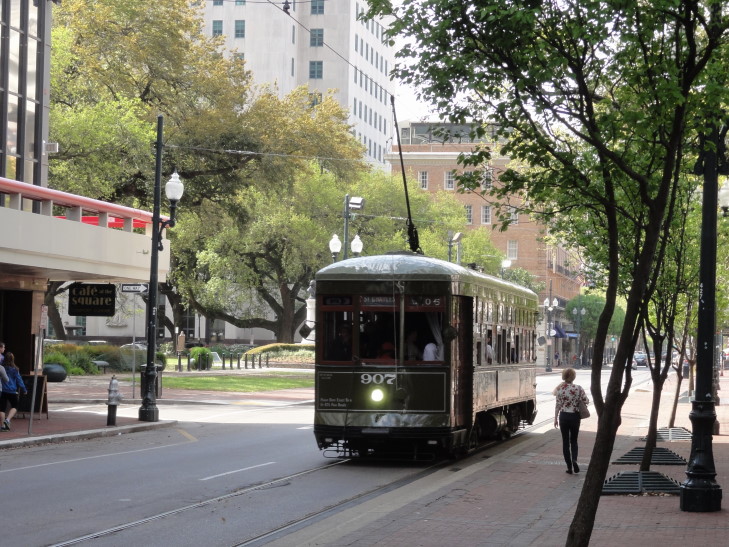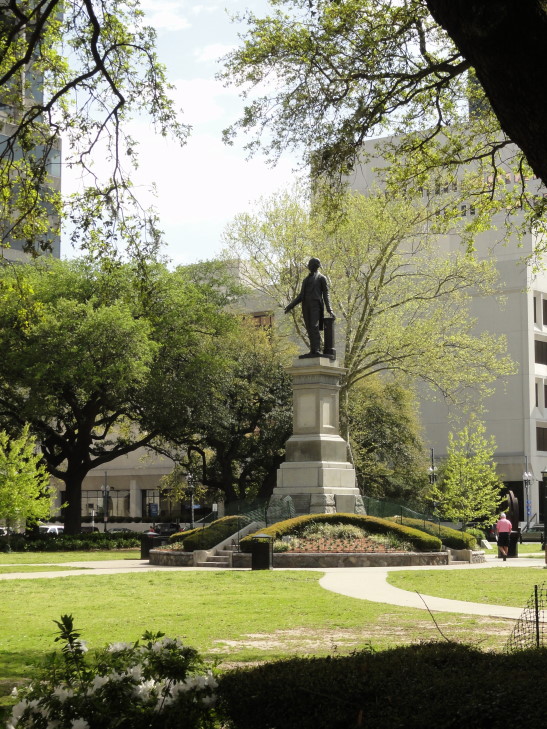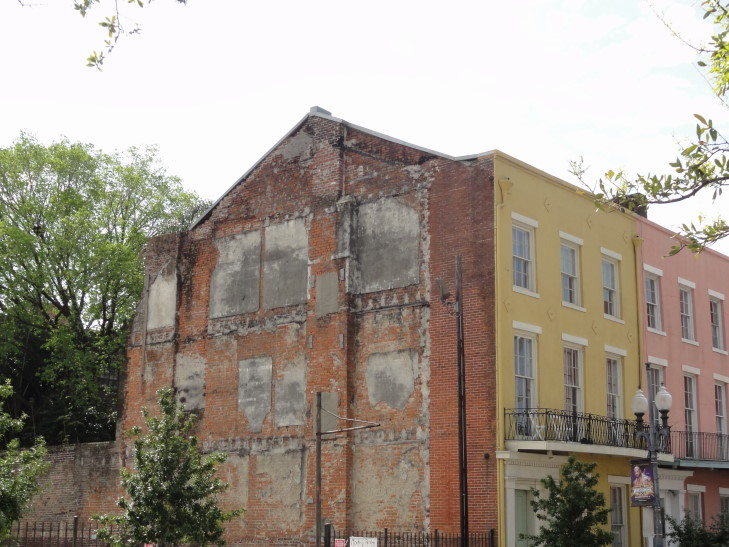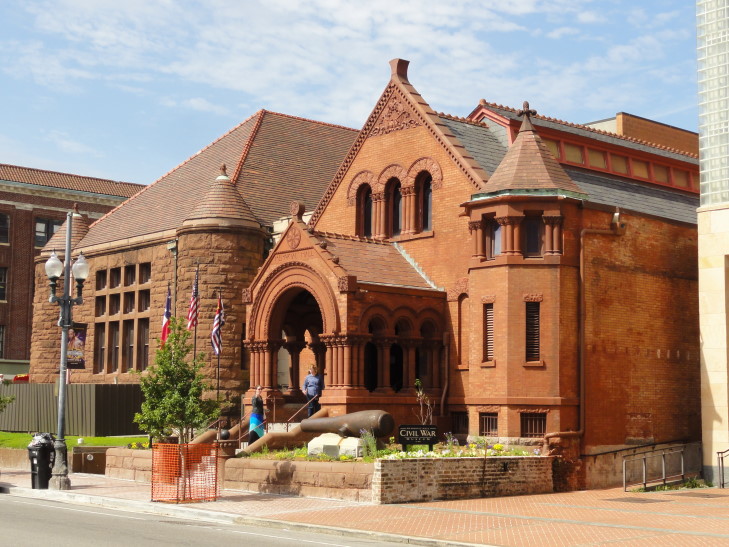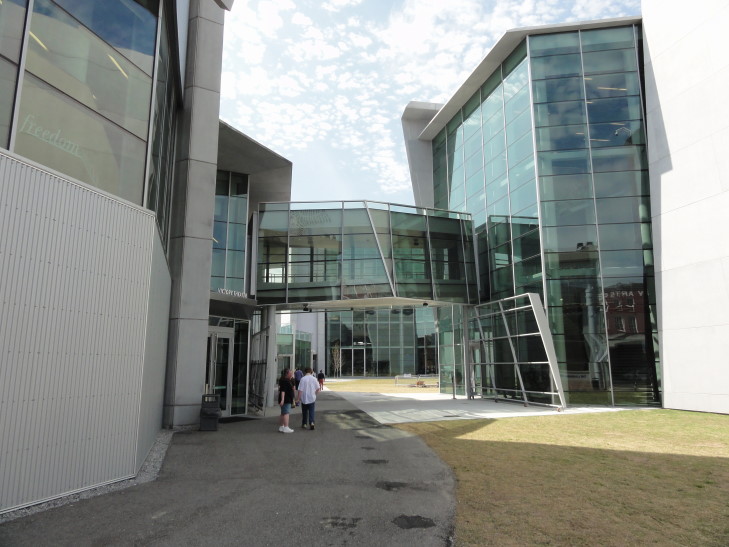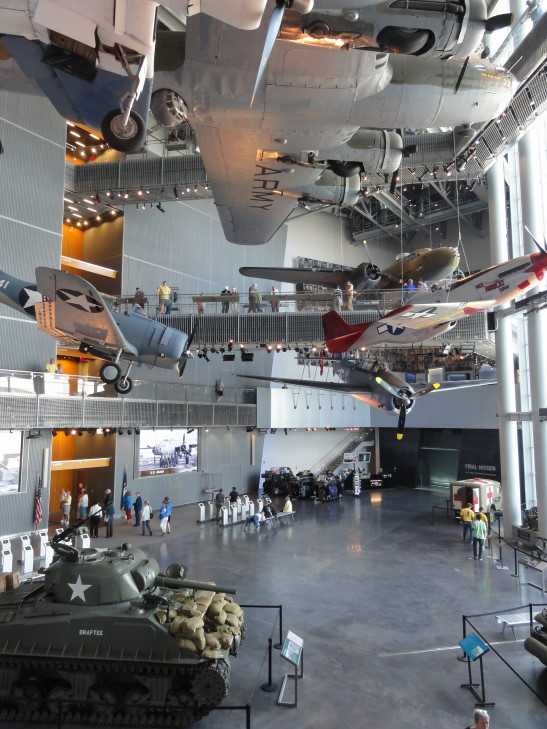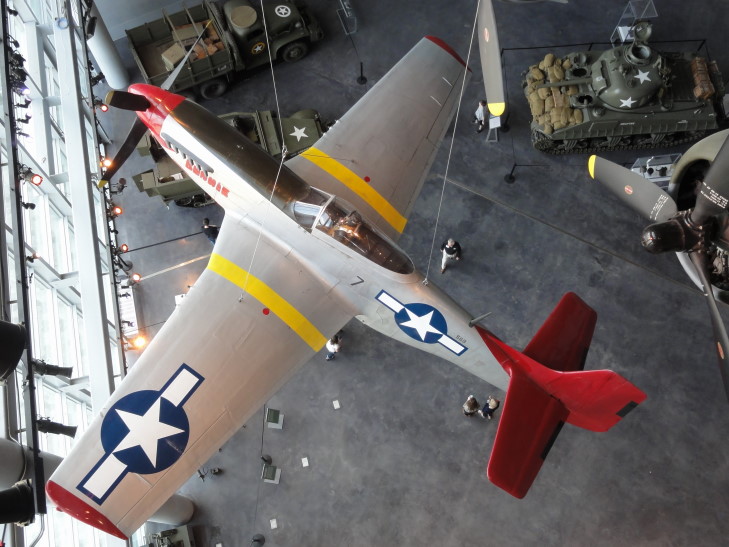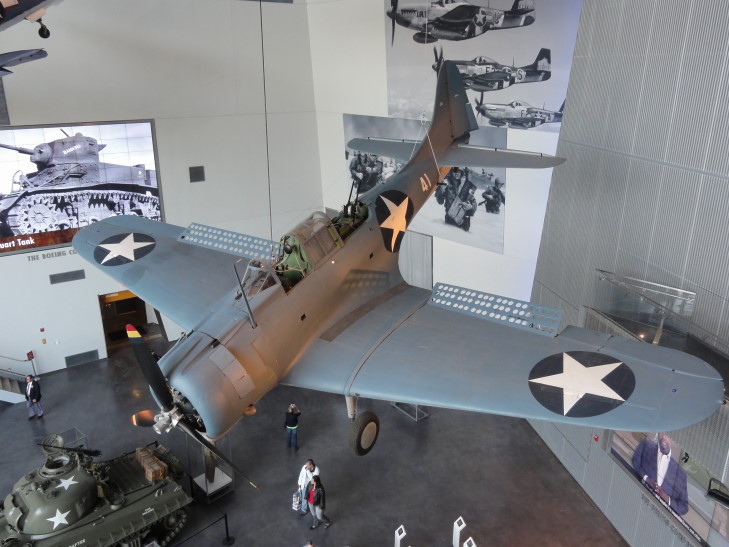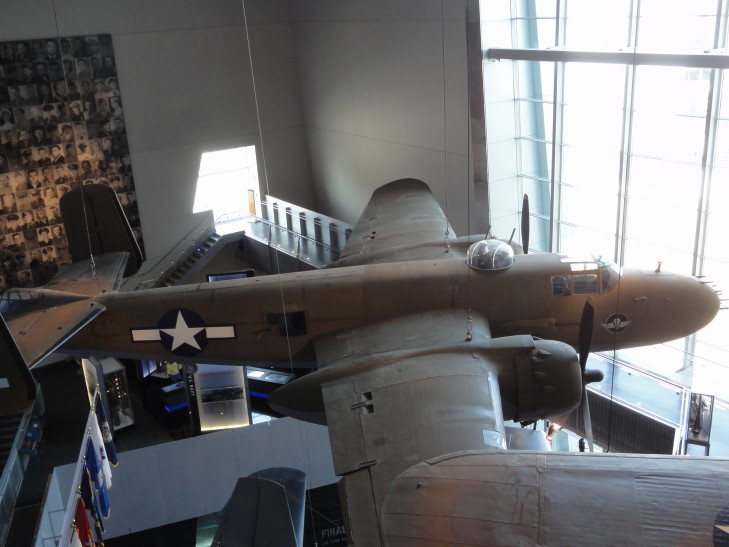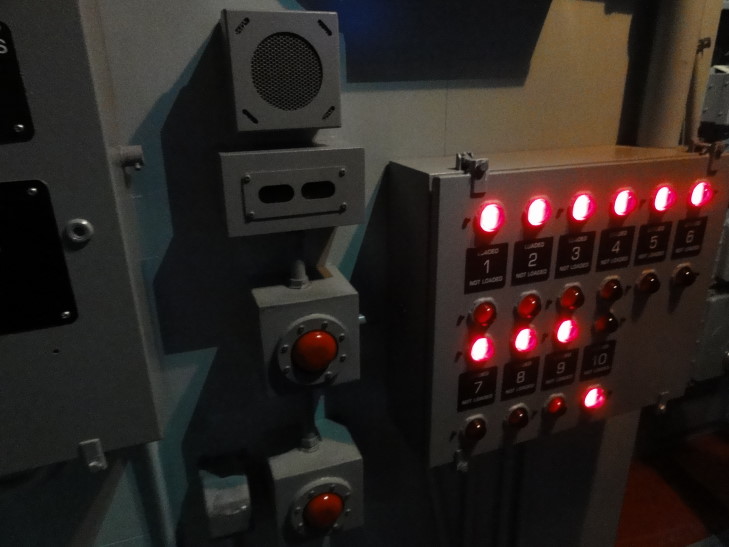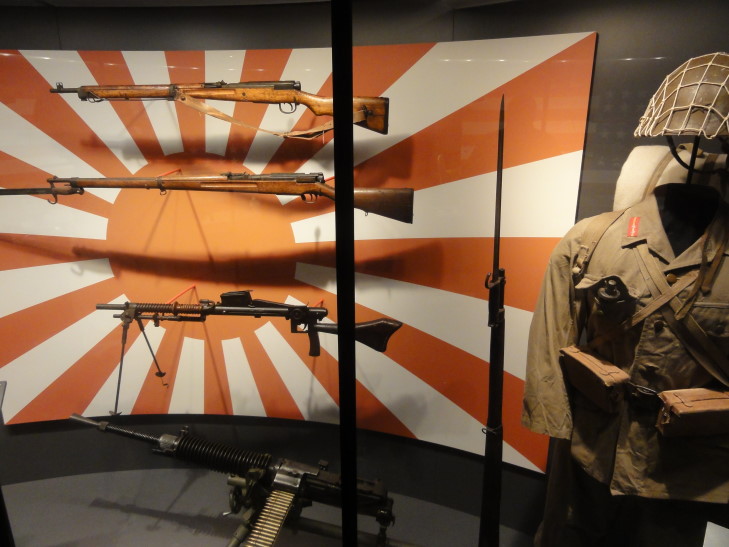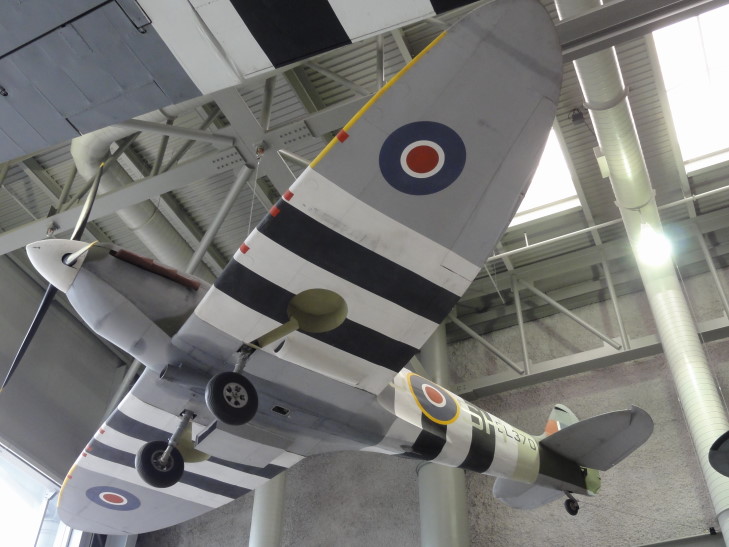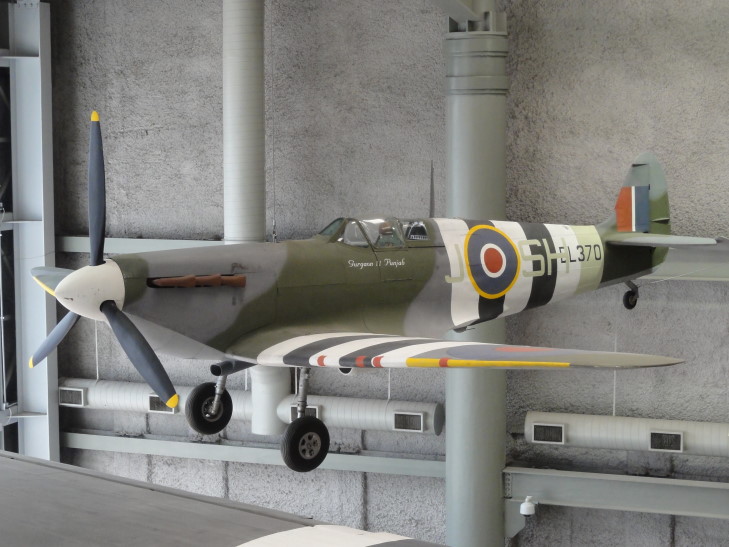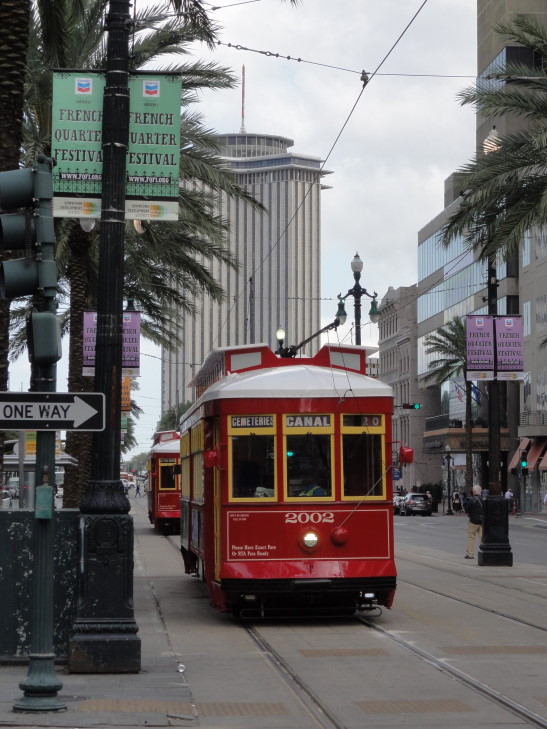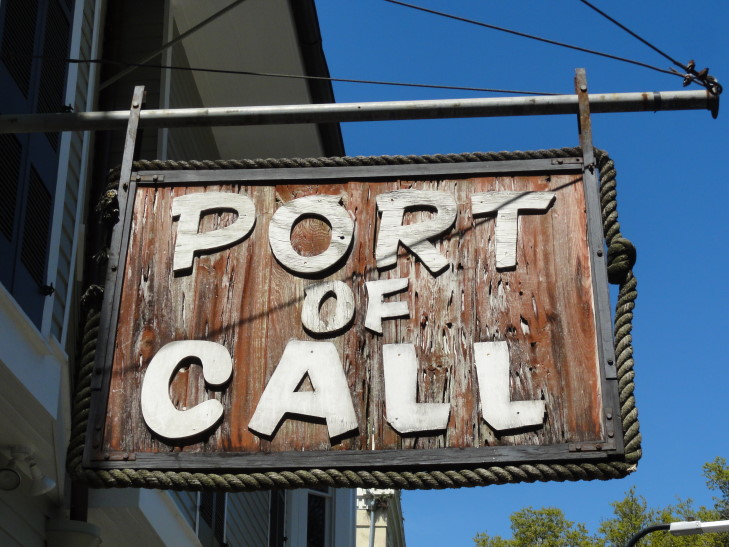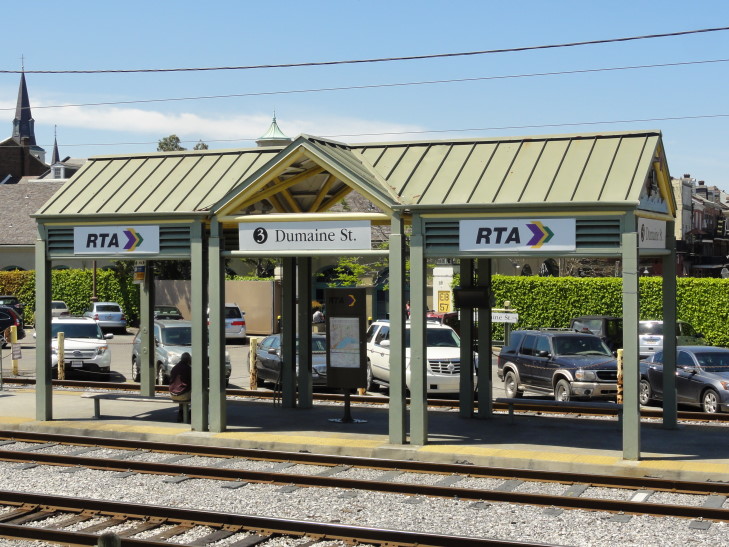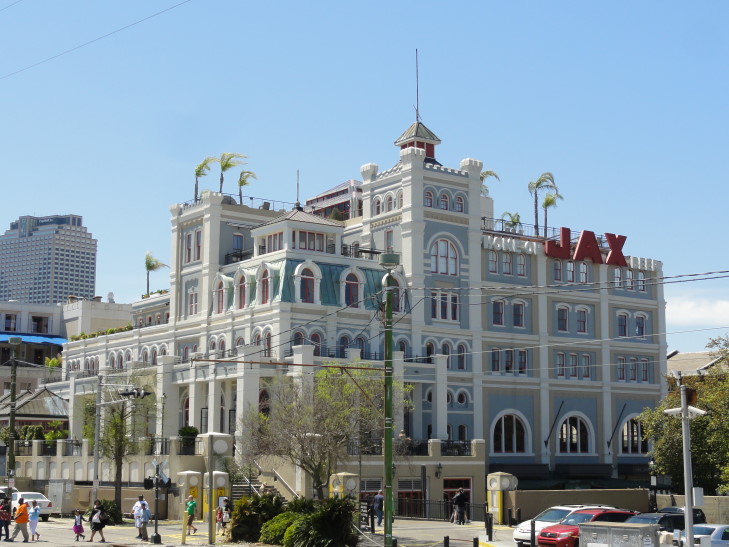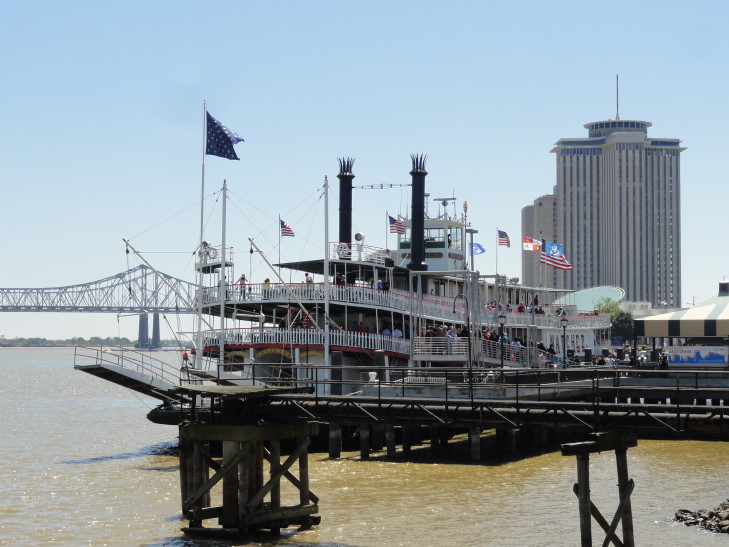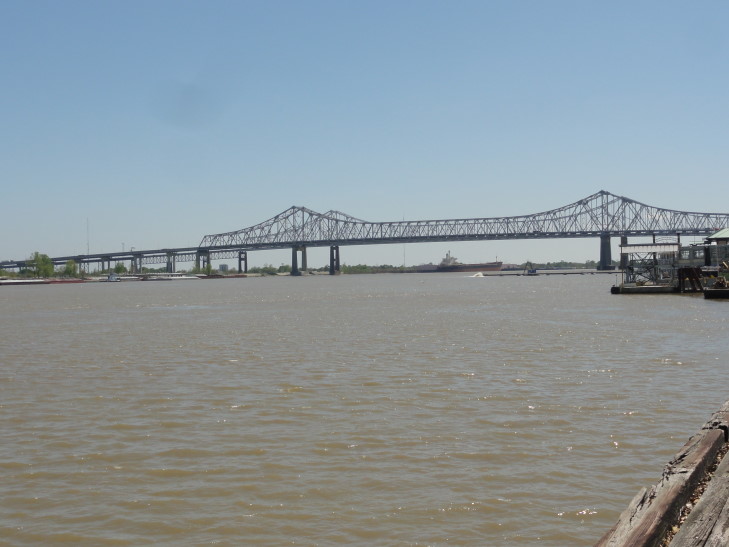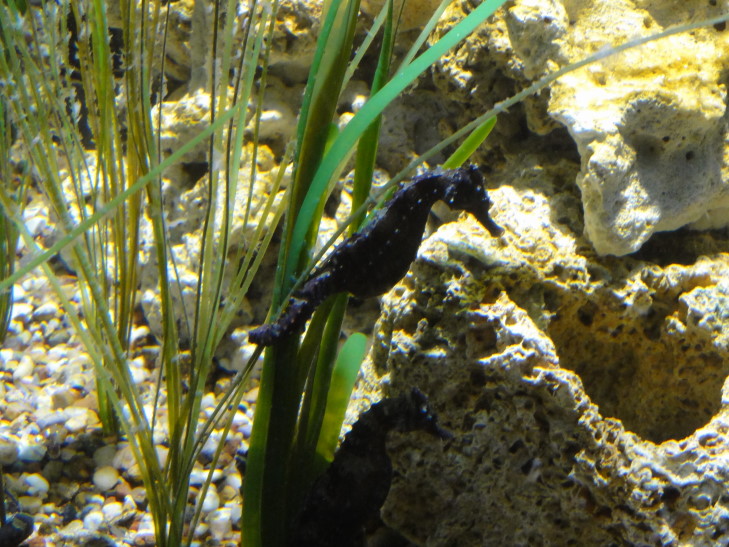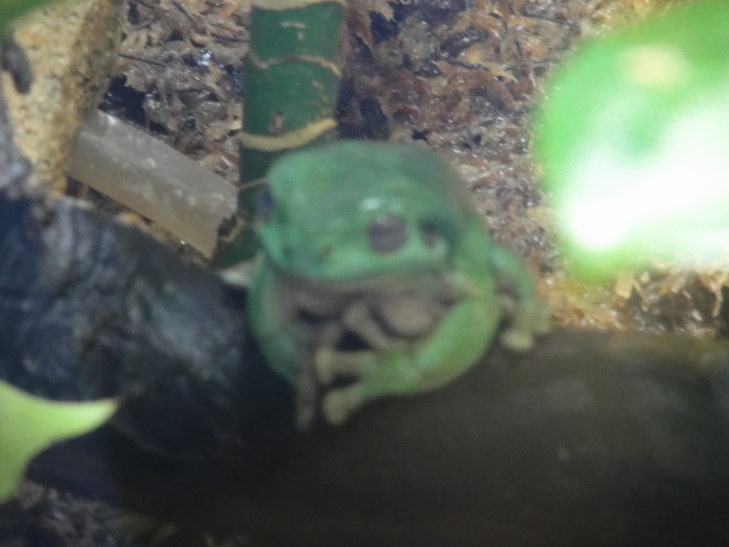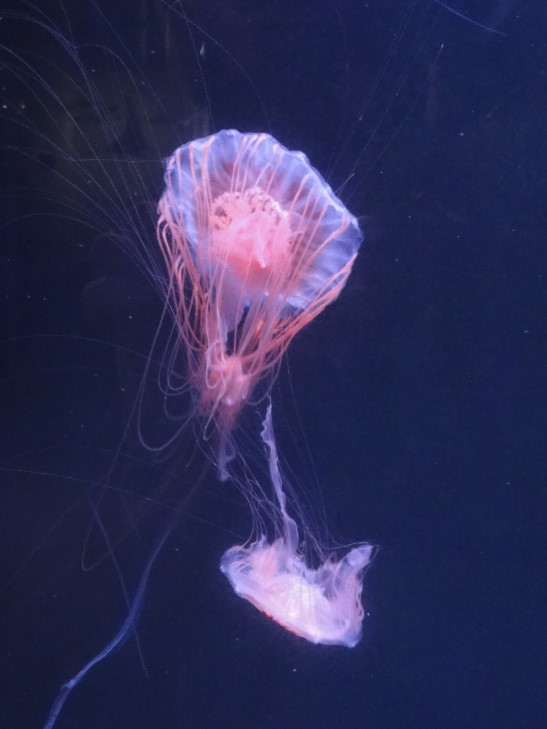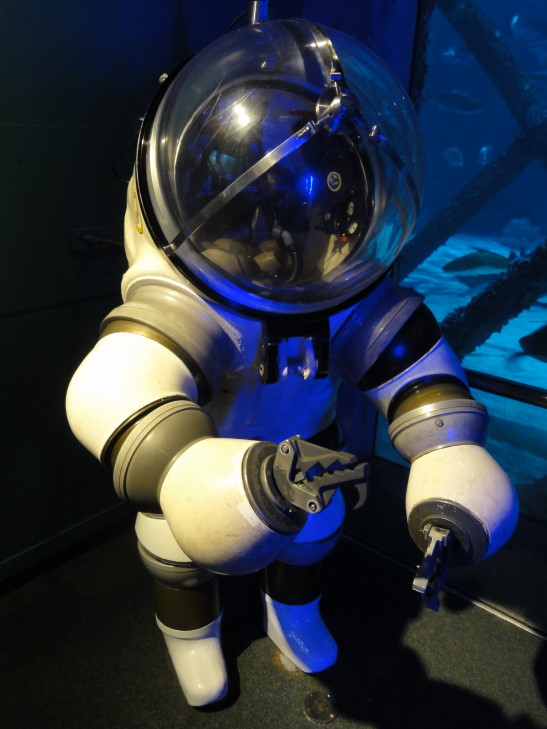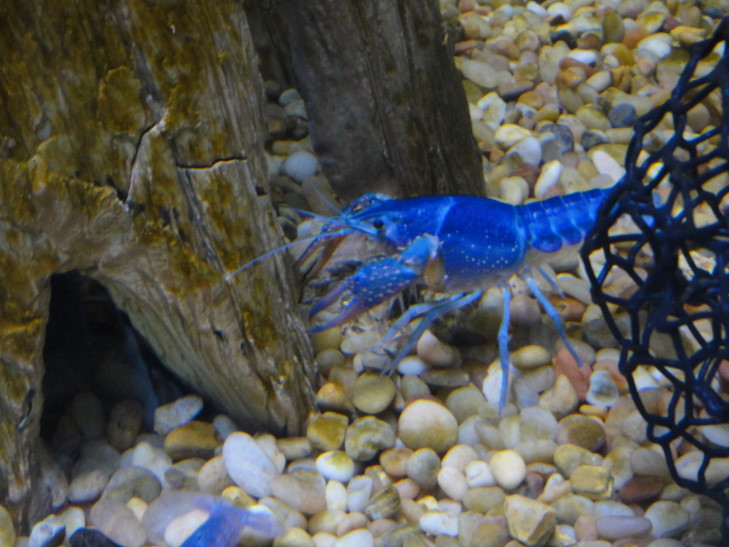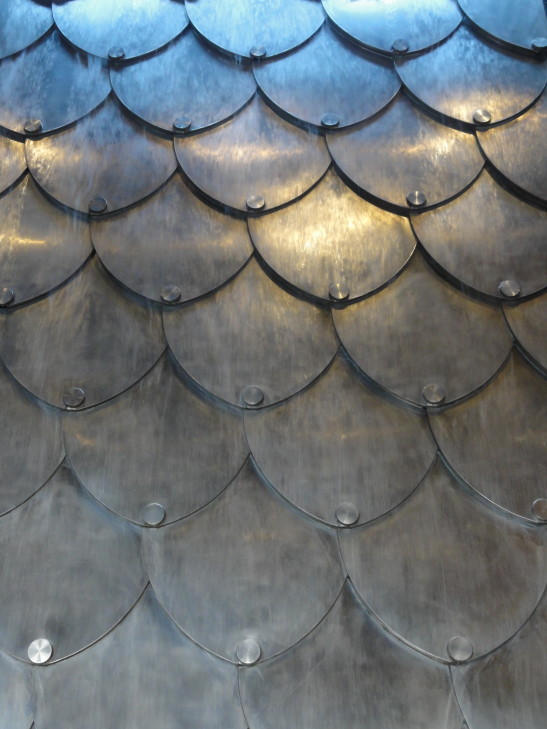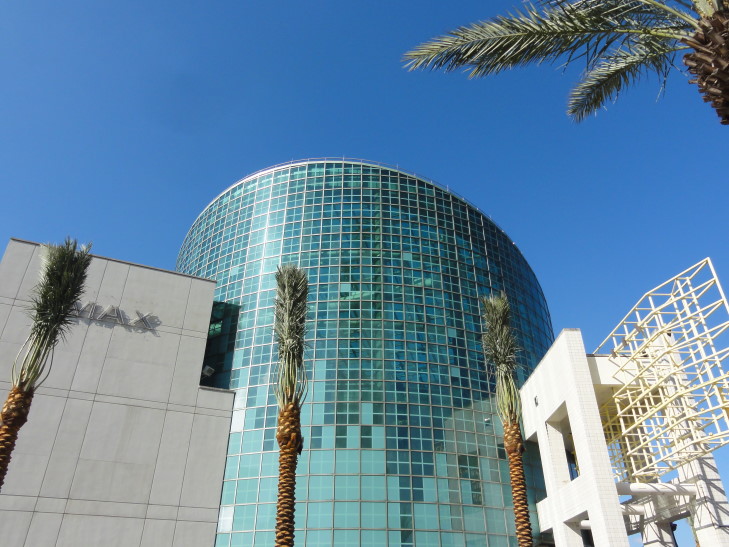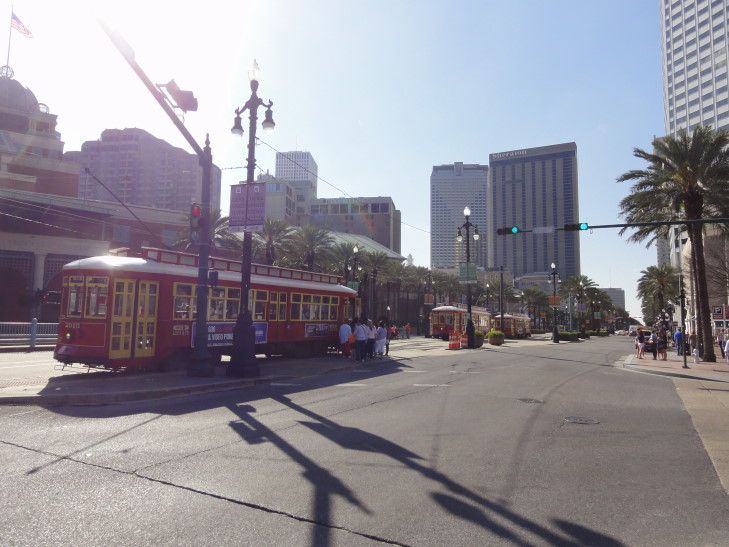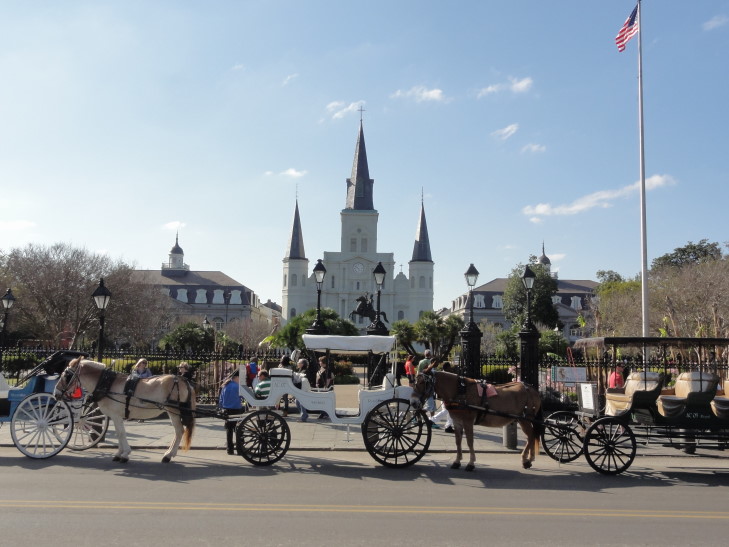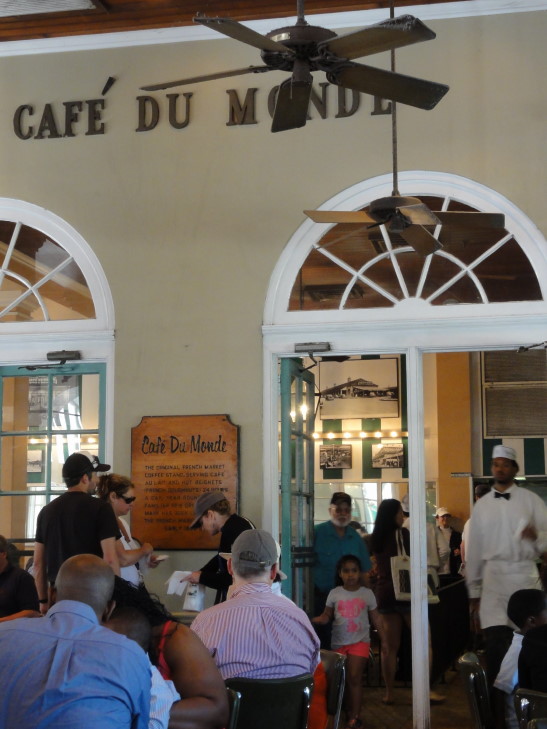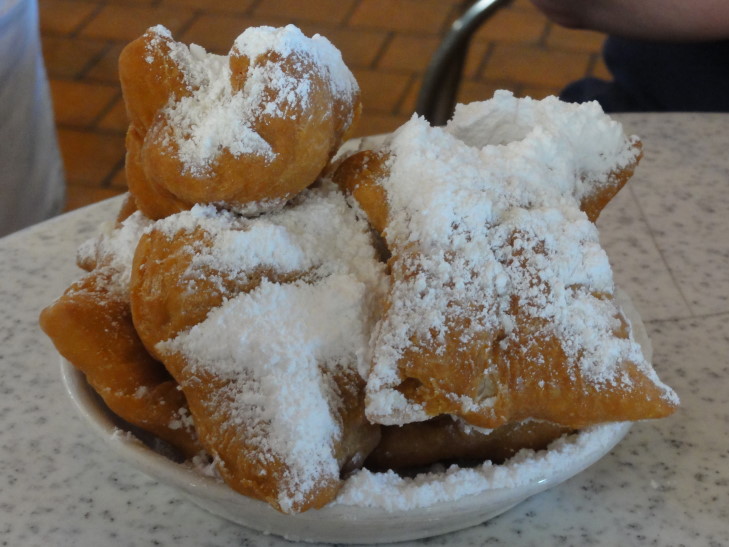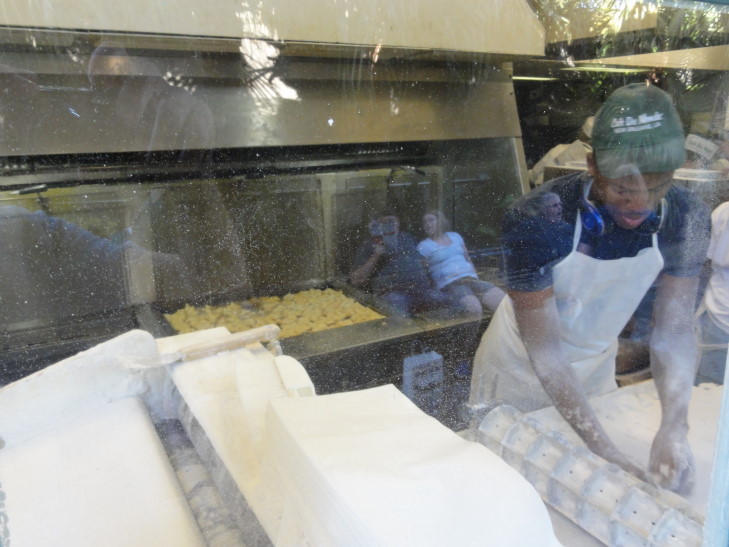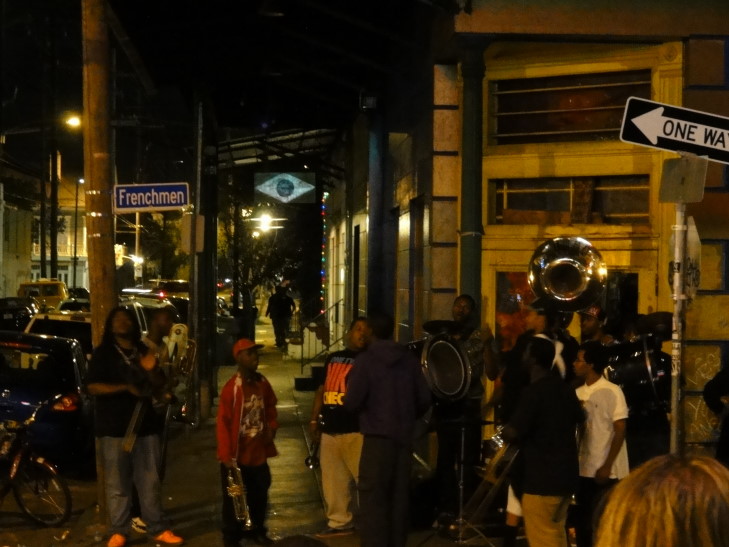We woke up really early, 6a or so, and got showered and ready for our 8a pickup by Enterprise. They drove us in a big white van to their office on Canal Street just north of I-10. The driver was really friendly and told us about the time he spent in Kansas City with relatives after the storm (people around New Orleans normally just refer to Katrina as “the storm”, not “Katrina”). He said he only lasted until December but then decided it was too cold for him and moved back. He and his wife have a duplex and relatives are always coming down to visit the city for a bit. We got our car about 8:45a and set off on I-10, stopping in Kenner (just west of New Orleans) for gas and McDonald’s breakfast.
Just past Kenner we took I-310 south across the river and then took several back roads (including 3127, a neat road because it has both my wife’s and my birthday in it) to Oak Alley Plantation. It was a beautiful drive, everything was so green. We passed through a lot of bayou on the elevated roadway, many cypress trees wreathed in Spanish moss. We spotted two bald eagles (one sitting atop a telephone pole, another in flight further down the road), a number of egrets (including five or six all sitting in one cypress), and even a roadkill armadillo. One thing that is amazing about southeastern Louisiana is how quickly the city of New Orleans transitions to nothing but bayou.
Oak Alley Plantation is famous for the amazing Live Oaks that line the entrance from the Mississippi levee all the way to the front door of the house. It doesn’t disappoint, as soon as we drove by (on the way to the parking entrance) it was jaw dropping. Everything was so pretty as the azaleas were in full bloom. Unfortunately my nose was noticing that and was running almost all day. We started behind the house at the reconstructed slave quarters and learned much about the slaves that were on the plantation. Oak Alley was a sugar plantation and the conditions were even more brutal and dangerous than at most other types of plantations. They had a doctor on call that was renowned at being good at treating injuries — being good in this case was that he almost always resorted to amputation and he didn’t lose many patients during the process. Egads. They also buried people with their severed limbs thinking that they would be reunited with them in heaven. We also learned about a slave named Antoine that was famous for grafting strains of pecan trees and creating a new variety with a very easy to crack shell that had more “meat” inside. Finally, we learned that November and December were the roughest months on a sugar plantation as that was the time of the “grinding”, when the slaves worked 18-hour shifts seven days a week grinding the cane. Horrific.
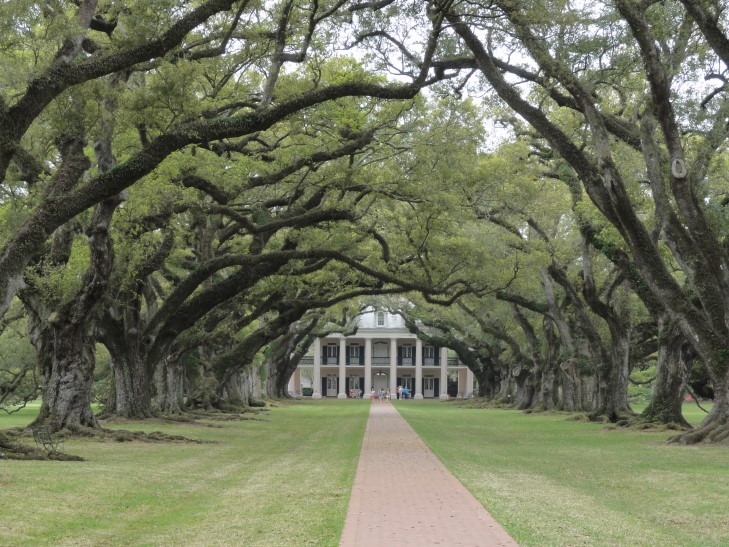
Entrance to Oak Alley Plantation

Rear of Oak Alley

Reconstructed slave quarters at Oak Alley

Live Oak branches touching the ground at Oak Alley

Ressurection Fern growing on the side of the Live Oaks

Side view of Oak Alley over the hedges

Another side view of Oak Alley

More of the Live Oaks, check out the massive root system!

Another shot of the entrance

Zoomed in at the entrance

Massive Live Oak and bench
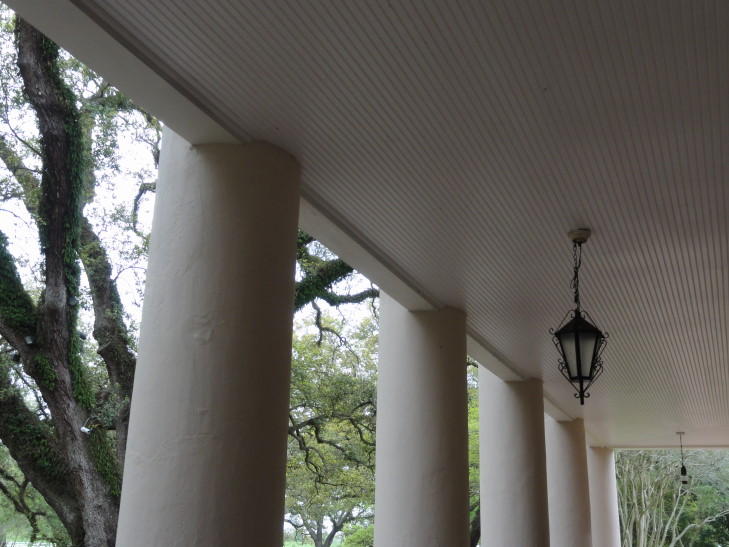
Front porch of the house
We then got a tour of the plantation itself. Built in the 1837 by Jacques and Celina Roman, a Creole couple, the home was magnificent. We learned a ton of stuff about the family (his dad was the nation’s first two-term governor, she favored the French Quarter to living out in the country, they had six kids but three died very young, he died of TB and as she had no concept of budgeting as well as the Civil War the plantation was bankrupt by 1866, one of their daughters became a founder of the Order of Carmelites in New Orleans, etc.). By 1925 the house had fallen into complete ruin with a hole in the roof and water pouring within, a group of bats in residence, and cattle stomping all about the main floor destroying the black and white marble floor. It was bought, however, by a couple for only $50,000 and then restored for an additional $60,000. After their death they willed the house to a foundation that opened it to the public in 1972. The couple was instrumental in saving the defining feature of the plantation, the alley of Live Oaks, in 1927. After the devastating flood of that year (the same flood that Led Zeppelin’s “When the Levee Breaks” is about), the Army Corps of Engineers raised the levees from 6 to 40 feet in height and wanted to clear the trees. The owners argued that the house had never flooded, even in 1927, and that there was no need to cut them down. Whew!
A couple of cool things about the house itself — it was made of Mississippi mud bricks but, due to all the leaves and sticks and stuff in the bricks they had to use plaster to conceal the rough surface of the brick. Above the dining room table hung this large fan like apparatus that would help keep a breeze going and shoo away flies. Those flies that didn’t take the hint were lured into a glass bottle that contained poisoned sugar water. They had large silverware utensils to reflect their wealth and they had the spoons laid out such that the spoon back faced up because they had each of them engraved with their initials. They paid $300 a week ($4500 in today’s money) to have ice shipped down the Mississippi.
After seeing the living room, dining room, and bedrooms upstairs we were led out to the balcony for a spectacular view of the front entry alley, then around to the back of the house for a view of the garden. We then went down the stairs and saw an office in the rear of the house before heading back out to the parking lot and the car (a black Chevy Equinox). Then drove back across the river and up Airline Highway (US-61) before hitting I-10 then I-12 in Baton Rouge.

Oak Alley's dining room

One of the bedrooms at Oak Alley

View of the entrance from the second floor balcony

Spanish moss on the drive towards Baton Rouge
We got off on Millerville Road and ate at the Chili’s that stands exactly where my elementary school, Millerville Academy, stood. In fact, it pretty much sits where the geodesic dome that I fell off of when I was eight or so and broke my arm sat. Had pretty standard Chili’s fare, one thing that was different is that they had these iPads on the table where you could play games and check out. On the way out I looked north towards the neighborhood, Avalon, where I used to walk to Cub Scouts as a kid and checked out a still existing stand of clover — as kids we’d spend our recess catching bees with Frisbees.

Chili's on the site of my old school, Millerville Academy

Stand of clover at Millerville, years earlier I terrorized bees by trapping them under Frisbees
Left Millerville, turned on to South Harrells Ferry then Jones Creek and George O’Neal, entering into the back way of Shenandoah, the subdivision adjacent to the one that I grew up in from the late-70s through 1984, White Oak Landing. We had to go that way (the back way) because the front entrance’s bridge over Jones Creek was being rebuilt by the DOT. In addition to our old house, which was changed a bit from when we lived there with the addition of some columns, a few outbuildings, and of course different landscaping, we saw other buildings from my past. This included the house where I first played AD&D with a friend (and heard Rush as the friend’s brother was into them). I also remember playing through Infocom games including Starcross in their study. We also saw where my best friend Dan Wardlaw lived (before moving across the street to another house). That was also the house where I first saw cable and MTV — by then the Wards lived there and they subscribed to cable. Also saw where family friends Mr. Harold and Ms. Helen lived as well as the other house that my family built (but never got to live in as we were moved to North Carolina a bit after its completion).

Back entrance sign to White Oak Landing subdivision

The Wardlaw's first house in White Oak Landing, where I first saw cable and MTV (after the Wards bought it)

Amite River at White Oak Landing, dad would park his VW Dasher next to the flood waters here when they'd rise to cover the street

The circle of Beech Harbor Avenue, with much more landscaping than in the past when we lived there

Our house in White Oak Landing from the late 1970s until 1984
Leaving White Oak Landing back through Shenandoah we proceeded to the house we first lived in in Louisiana on Parkrill Avenue. I don’t remember a ton about that house, but it was the house that my brother and I tore up the sidewalk because it was cracked and we thought we were doing mom and dad a favor. We also saw the school I first attended — I had no idea it was so close!

Our first house in Baton Rouge, on Parkrill Avenue
In fact, the thing that struck me most about the whole day was just how close together everything was. Distances I thought were vast where way less than a mile. Very strange feeling. I enjoyed visiting the old neighborhood and Genetta even said she thought it’d be a nice area to grow up. It was!
Headed back to New Orleans via I-10 across some beautiful bayou and right along the edge of Lake Pontchartrain. Crossed back into the city and was able to return to the rental office with no complications — always a relief. The same guy drove us back to our unit and talked of fishing with his Cajun buddies during the drive. He said that they were the nicest people you’d ever meet but they could be hard to understand because they pronounced stuff differently. He described a fishing trip with them as a “weekend of sitting in a boat saying ‘what?’ all the time.”

Railroad tresses and cypress seen from I-10 heading towards New Orleans

Bayou seen from I-10, note the cypress knees in the lower right

View of the Super Dome and New Orleans downtown
Shortly after arriving we all headed back to Marigny Brasserie and Bar. Sadly they had a new chef and it wasn’t quite the same. Still, bellies full we headed back to the unit and as my sneezing was as bad as ever I went straight to bed (hence the lateness of this blog entry).
